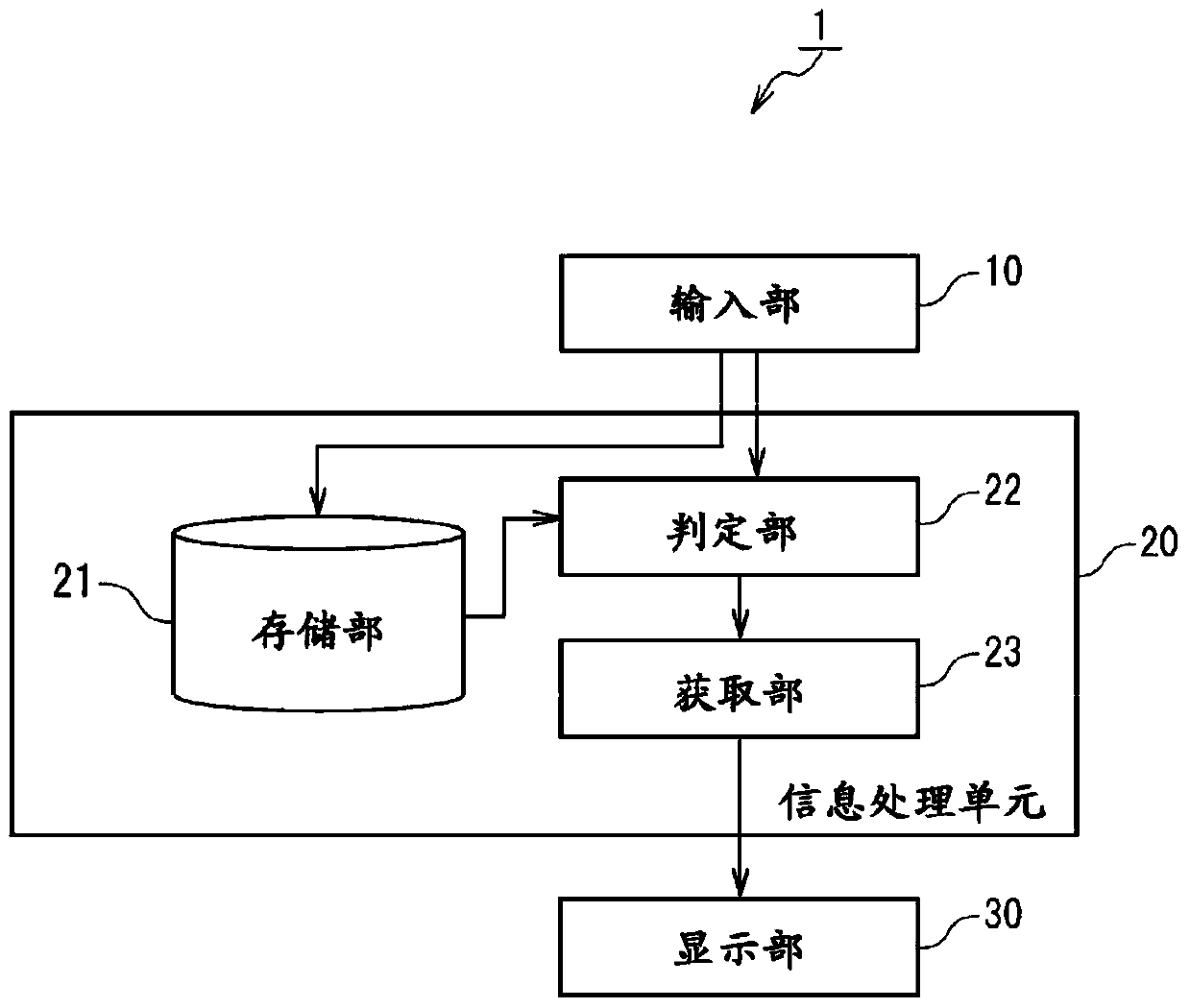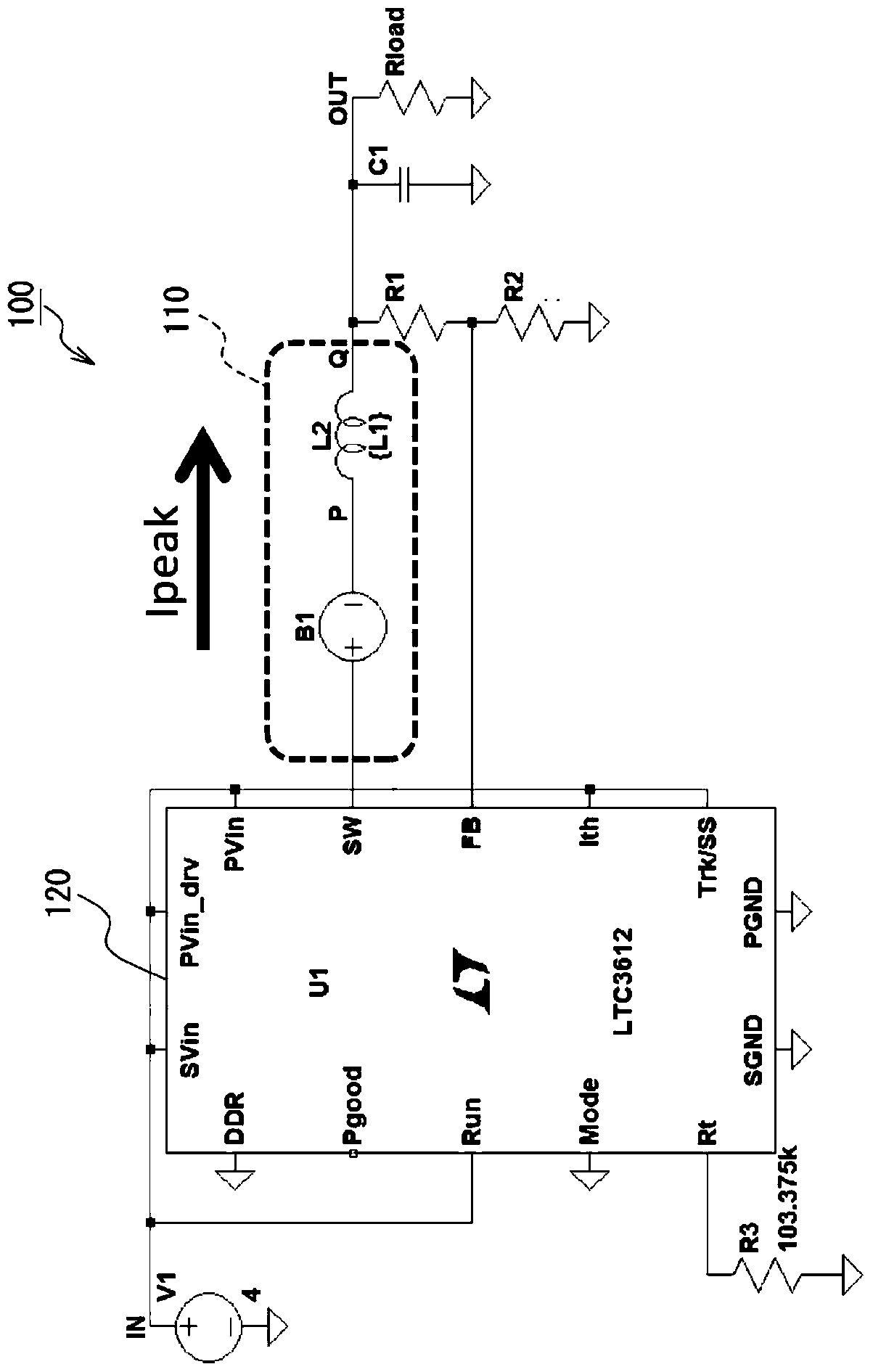Power inductor evaluation device and power inductor evaluation program
A technology for power inductors and evaluation devices, which is applied in the field of evaluation devices for power inductors, can solve problems such as not considering DC superposition characteristics, and achieve the selected effect
- Summary
- Abstract
- Description
- Claims
- Application Information
AI Technical Summary
Problems solved by technology
Method used
Image
Examples
no. 1 approach
[0040] First, use figure 1 The configuration of the power inductor evaluation device 1 according to the first embodiment will be described. figure 1 It is a block diagram showing the configuration of the power inductor evaluation device 1 . figure 2 It is a diagram showing an example of a circuit model (simulation model) of a DC-DC converter to which an equivalent circuit model of a power inductor used in the power inductor evaluation device 1 is applied.
[0041] The evaluation device 1 of a power inductor is a device that supports selection of a power inductor and optimization of design when designing a DC-DC converter. Therefore, the power inductance evaluation device 1 includes an input receiving unit 10 , an information processing unit 20 , and a display unit 30 . In addition, the information processing unit 20 includes a storage unit 21 , a determination unit 22 , and an acquisition unit 23 .
[0042] The input accepting unit 10 is constituted by, for example, a keyb...
Embodiment
[0066] Here, for two types of DC-DC converters having the operating conditions (condition 1 and condition 2) shown in Table 1, whether or not to use a power inductor was determined using the slope α of the DC superposition characteristic and the saturation current value Isat. In addition, it was determined using figure 2 A simulation model 100 of a DC-DC converter is shown. In addition, the criterion for judging is whether the peak current Ipeak in the power inductor has reached the limit current for stopping the operation of the DC-DC converter (see Table 1).
[0067] 【Table 1】
[0068] Condition 1 Condition 2 frequency 3.2MHz 1.6MHz Input and output voltage 4 / 2.0V 4 / 2.0V inductance 1.0μH 2.2μH Output current 2A 1.5A Limiting current 3.1A 2.4A
[0069] For condition 1, Figure 5 It shows that the saturation current Isat of the power inductor is changed between 1.5 (A) and 2.5 (A) around 2 (A), which is the maximum o...
no. 2 approach
[0084] In the power inductance evaluation device 1 according to the first embodiment described above, the slope α of the DC superposition characteristic and the saturation current Isat are input to the circuit model 100 of the DC-DC converter, but it may be configured to input the DC superposition characteristic. The actual measured value. In addition, in the evaluation device 1 of the above-mentioned power inductor, it is determined and output whether the combination of the slope α of the DC superposition characteristic and the saturation current Isat can be used, but it can also be configured to use the actual measurement value of the above-mentioned DC superposition characteristic (power inductor) The range of operating conditions (for example, output current Iout) of the DC-DC converter that can be used is determined and output.
[0085] So next, use the Figure 7 , 8 , the power inductor evaluation device 2 according to the second embodiment will be described. Here, th...
PUM
 Login to View More
Login to View More Abstract
Description
Claims
Application Information
 Login to View More
Login to View More - R&D
- Intellectual Property
- Life Sciences
- Materials
- Tech Scout
- Unparalleled Data Quality
- Higher Quality Content
- 60% Fewer Hallucinations
Browse by: Latest US Patents, China's latest patents, Technical Efficacy Thesaurus, Application Domain, Technology Topic, Popular Technical Reports.
© 2025 PatSnap. All rights reserved.Legal|Privacy policy|Modern Slavery Act Transparency Statement|Sitemap|About US| Contact US: help@patsnap.com



